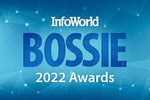

Martin Heller
Contributor
Martin Heller is a contributing editor and reviewer for InfoWorld. Formerly a web and Windows programming consultant, he developed databases, software, and websites from his office in Andover, Massachusetts, from 1986 to 2010. More recently, he has served as VP of technology and education at Alpha Software and chairman and CEO at Tubifi. Disclosure: He also writes for Hewlett-Packard’s TechBeacon marketing website.


Ballerina: A programming language for the cloud
Ballerina was designed to simplify the development of distributed microservices by making it easier to integrate APIs. For C, C++, C#, and Java programmers, much will feel familiar.

What is garbage collection? Automated memory management for your programs
Most modern programming languages use garbage collection, but developers have options for how it is implemented and tuned. Get an overview of how garbage collection works in languages such as Java, Python, and C#.

nbdev v2 review: Git-friendly Jupyter Notebooks
Add-on to Jupyter Notebooks enables a literate Python development style that gives you high-quality documentation, tests, continuous integration, and packaging for free.

What is a compiler? How source code becomes machine code
Find out how source code is compiled for different programming languages and computer architectures, including the evolution from FORTRAN to CLR and JIT compilers.

10 databases supporting in-database machine learning
While approaches and capabilities differ, all of these databases allow you to build machine learning models right where your data resides.

Review: Appsmith shines for low-code development on a budget
Appsmith presents a full palette of low-code development features in an accessible drag-and-drop environment. It shines as a free, open source option, with extra bells and whistles available for a price.

Beyond C++: The promise of Rust, Carbon, and Cppfront
There's light on the horizon for C/C++ developers looking for a change. Rust, Carbon, and Cppfront are all promising alternatives to the legacy languages programmers love to hate.

Golang tutorial: Get started with the Go language
Go is a concise, simple, safe, and fast compiled language with outstanding concurrency features. Now, it has generics, too. Isn’t it time you gave Go a try?

How to choose a cloud CI/CD platform
Hosting CI/CD in the cloud can speed up interactions between development pipelines and source code repositories and make life easier for developers. There are a surprising number of options.

The best open source software of 2022
InfoWorld’s 2022 Bossie Awards celebrate the most important and innovative application development, devops, data analytics, and machine learning tools of the year.

What is Kotlin? The Java alternative explained
Kotlin offers big advantages over Java for JVM and Android development, and plays nicely with Java in the same projects.

How to choose a cloud machine learning platform
12 capabilities every cloud machine learning platform should provide to support the complete machine learning lifecycle—and which cloud machine learning platforms provide them.

What is Node.js? The JavaScript runtime explained
Node.js is a lean, fast, cross-platform JavaScript runtime environment that is useful for both servers and desktop applications.

What is CUDA? Parallel programming for GPUs
NVIDIA’s CUDA is a general purpose parallel computing platform and programming model that accelerates deep learning and other compute-intensive apps by taking advantage of the parallel processing power of GPUs.

Dremio Cloud review: A fast and flexible data lakehouse on AWS
Dremio Cloud leaps big data in a single bound with a fast SQL engine and optimizations that can accelerate queries dramatically. Plus it lets you use other engines on the same data.

Kissflow review: No code and low code for workflows
Kissflow has a good selection of low-code and no-code development capabilities, along with useful integrations with external systems for handling events and performing automations.

Deno vs. Node.js: Which is better?
Node.js is still the most widely used JavaScript runtime environment, but Deno is more secure and brings modern advantages. Compare Deno and Node.js and decide which is right for your next project.

Visual Studio vs. Visual Studio Code: How to choose
Choosing between Visual Studio Code and Visual Studio may depend as much on your work style as on the language support and features you need. Here’s how to decide.

Review: Snowflake aces Python machine learning
Snowpark for Python gives data scientists a nice way to do DataFrame-style programming against the Snowflake data warehouse, including the ability to set up full-blown machine learning pipelines to run on a recurrent schedule.